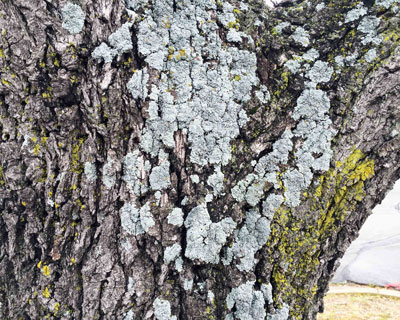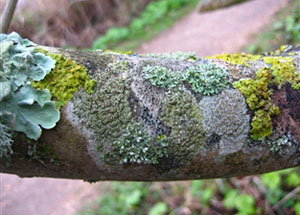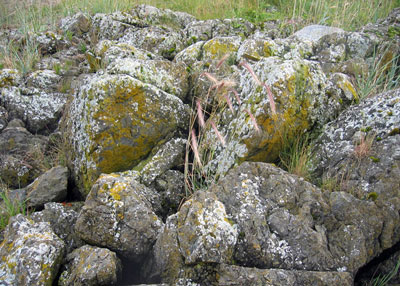Question of the Week #2: January 19, 2017
“Neil, what is this growing on the trunk of my tree? Will it kill the tree?”

Photo: This colony of lichen species is growing on a perfectly healthy tree in Collin County, Texas.
If you look around you the next time you’re out for a walk, you’ll see lichens growing on all kinds of surfaces. The question pertains to lichens on tree trunks and branches, but you’ll also see them decorating landscaping boulders both in our gardens and in remote spots in rugged terrain. Lichens are God’s tapestries of nature.
But you’re asking, “Do lichens hurt anything? Will they kill my tree?”
The answer to both questions is “No.” Lichens are basically harmless living organisms. If you Google “lichens” you’ll find tons of matches. Include the word “university” in the search and you’ll find write-ups from almost all the major ag colleges in America. Some say there are 10,000 types. Others cite a number that’s very much higher.

Photo: The PSPB conservation group from the UK has this great example of the diversity of lichens on its website. Aren’t they gorgeous!
Lichens are the prototypic example of symbiosis – where two distinctly different life organisms exist in support of one another. It’s much more involved that simply saying that lichens consist of algae and funguses growing together. They receive nothing from their host surfaces other than places to hang out. No moisture. No nutrients. Only support.
Lichens are generally most prominent on the trunks of Texas trees, particularly deciduous trees that allow sun to reach the lichens up to four or five months out of the year. I have them growing on pecan and oak trunks, but any tree can host a lichen. Lichens aren’t particular.
Lichens grow almost everywhere. You’ll find ample examples from the desert, tropical rainforests and the Arctic tundra, where reindeer moss is a food staple of, yep, reindeer.
You’ll also see them growing on landscaping boulders. They look like colorful moss, but nope. These aren’t moss at all. You know now that they’re lichens. People pay really big dollars to get boulders that are covered in them.

Photo: This great example of lichens growing all over rocks is posted on the fascinating site “Madi’s Earth Science Site.” I suspect the young lady did this as a school project. She did famously!
Can lichens kill a tree by their presence? Absolutely not. They sometimes show up on trunks and branches that are already dead or dying. That’s because those branches don’t have leaves to shade the lichens during the summer. They get enough light to grow vigorously. But the lichens didn’t kill the branches. Something else did, and the lichens just moved in as improved lighting permitted.
Put in other terms, lichens don’t kill the boulders they’re growing on, and lichens don’t kill plants that they’re growing on, either.
Want to know more about lichens? If you’re that person who’s fascinated by this odd form of life, here are some really good university web pages:
Rutgers: https://njaes.rutgers.edu/pubs/fs1205/
Clemson:
http://www.clemson.edu/extension/hgic/videos_posters/videos/lichens.html
Michigan State:
http://msue.anr.msu.edu/news/what_are_lichens_and_what_are_they_doing_on_my_tree
Arizona State:
http://nhc.asu.edu/lherbarium/lichen_info/
